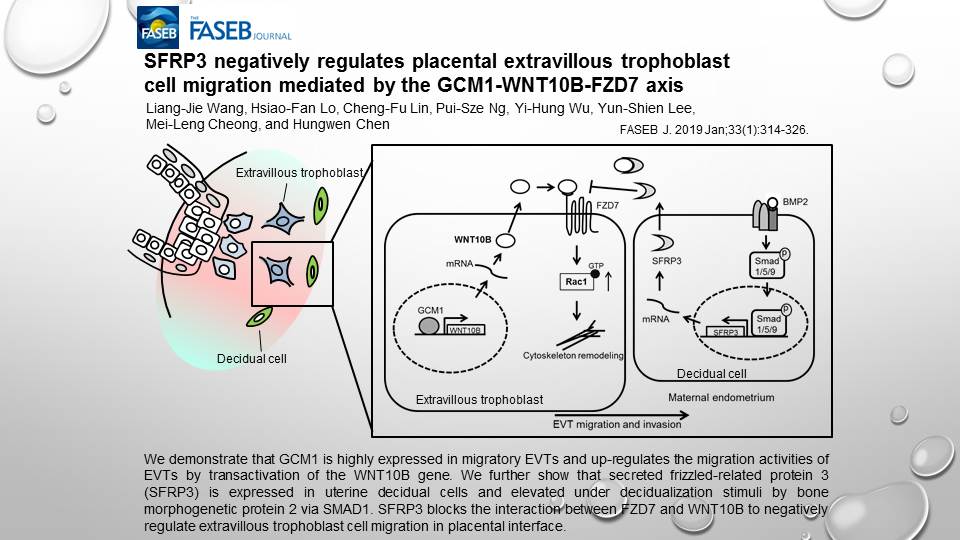
 中央研究院 生物化學研究所
中央研究院 生物化學研究所
Migration of placental extravillous trophoblast (EVT) cells into uterine decidua facilitates the establishment of blood circulation between mother and fetus and is modulated by EVT-decidual cell interaction. Poor or excessive EVT migration is associated with pregnancy complications such as preeclampsia or placenta accreta. Glial cells missing 1 (GCM1) transcription factor is essential for placental development, and decreased GCM1 activity is detected in preeclampsia. To study whether GCM1 regulates trophoblast cell migration, here we showed that GCM1 promotes BeWo and JAR trophoblast cell migration through a novel target gene, WNT10B. Moreover, WNT10B signaling stimulated cytoskeletal remodeling via Rac1 and frizzled 7 (FZD7) was identified as the cognate receptor for WNT10B to up-regulate cell migration. We further showed that secreted frizzled-related protein 3 (SFRP3) is expressed in uterine decidual cells by immunohistochemistry and that SFRP3 expression in telomerase-transformed human endometrial stromal cells (T-HESCs) is elevated under decidualization stimuli and further enhanced by bone morphogenetic protein 2 via SMAD1. SFRP3 blocked the interaction between FZD7 and WNT10B to decrease BeWo cell migration, which corroborated the elevated BeWo cell migration when cocultured with decidualized and SFRP3-knockdown T-HESC monolayer. Our results suggest that GCM1 up-regulates EVT cell migration through WNT10B and FZD7, which is negatively modulated by decidual SFRP3.—Wang, L.-J., Lo, H.-F., Lin, C.-F., Ng, P.-S., Wu, Y.-H., Lee, Y.-S., Cheong, M.-L., Chen, H. SFRP3 negatively regulates placental extravillous trophoblast cell migration mediated by the GCM1-WNT10B-FZD7 axis.
